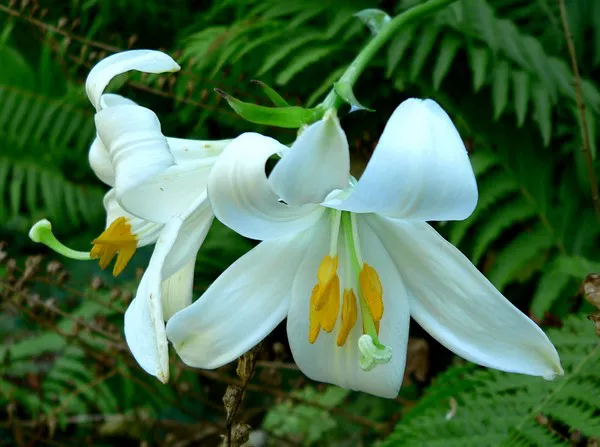Nurturing seedlings is a delicate and crucial stage in gardening and agriculture. Unfortunately, seedlings are highly vulnerable to various pests that can impede their growth and survival. Protecting seedlings from pests is essential for ensuring healthy plant development and maximizing crop yields. In this article, we will explore effective strategies and preventive measures to safeguard seedlings from common pests, enabling gardeners and farmers to promote successful plant growth.
Understanding the Impact of Pests on Seedlings
Pests pose a significant threat to seedlings, as they can cause direct damage by feeding on plant tissues or indirectly by transmitting diseases. Common pests that target seedlings include insects (such as aphids, caterpillars, and flea beetles), slugs, snails, rodents, and even fungal pathogens. These pests can stunt growth, deform leaves, and, in severe cases, lead to plant death. Therefore, implementing preventive measures early on is crucial for protecting the vulnerable seedlings.
Strategies for Protecting Seedlings from Pests
Site Selection and Preparation: Begin by selecting an optimal site for your seedlings. Choose an area with good drainage, adequate sunlight, and airflow. Avoid locations prone to pest infestations, such as areas with high weed populations or previous history of pest problems. Prepare the soil by removing debris, weeds, and plant residues that can serve as hiding places or food sources for pests.
Physical Barriers: Install physical barriers to deter pests from accessing seedlings. Options include:
Row Covers: Lightweight, permeable fabrics placed over seedlings create a barrier against flying insects, while allowing sunlight and rain to reach the plants. Secure the edges tightly to prevent pests from entering.
Collars and Protective Cages: Place collars made from materials like cardboard or plastic around individual seedlings to deter crawling pests. Additionally, construct cages using wire mesh or netting to shield seedlings from larger pests like rodents or birds.
Mulching: Applying organic mulch around seedlings serves multiple purposes. It helps suppress weeds that can harbor pests, maintains soil moisture, and regulates soil temperature. Use materials such as straw, wood chips, or compost, and ensure that the mulch is not directly touching the seedling stems to avoid potential rotting or pest attraction.
Companion Planting: Harness the power of companion planting by strategically placing pest-repellent plants near vulnerable seedlings. For example, strong-smelling herbs like basil, rosemary, or marigold can help deter pests due to their natural repellent properties.
Natural Predators and Beneficial Insects: Attracting natural predators and beneficial insects to your garden can help control pest populations. Plants that provide nectar, pollen, or shelter, such as dill, fennel, and yarrow, can attract beneficial insects like ladybugs, lacewings, and parasitic wasps. These beneficial insects feed on pests or their larvae, reducing pest populations naturally.
Organic Pest Control Methods: Employing organic pest control methods minimizes the use of synthetic chemicals and ensures a safer environment for both seedlings and beneficial organisms. Some effective methods include:
Handpicking: Regularly inspect seedlings and manually remove pests, such as caterpillars or slugs, by hand. Dispose of them away from the garden to prevent reinfestation.
Biological Controls: Introduce biological control agents, such as nematodes, predatory mites, or beneficial fungi, which target specific pests without harming seedlings or beneficial insects. Follow the instructions provided for proper application.
Botanical Pest Control: Utilize natural substances derived from plants, such as neem oil or insecticidal soap, which can deter or kill pests on contact. Ensure to read and follow the product instructions carefully to avoid harming seedlings.
Good Cultural Practices: Implementing good cultural practices helps create a healthy environment for seedlings, making them less susceptible to pests. These practices include:
Proper Watering: Water seedlings carefully, providing adequate moisture without creating excessive dampness, which can attract pests and promote fungal diseases.
Crop Rotation: Rotate crops annually to disrupt pest life cycles and reduce the buildup of pest populations in the soil.
Sanitation: Maintain cleanliness in the garden by promptly removing diseased or infested plant debris, which can serve as a breeding ground for pests and diseases.
Conclusion
Protecting seedlings from pests is a crucial aspect of successful gardening and farming. By implementing preventive strategies, utilizing physical barriers, attracting beneficial insects, and adopting organic pest control methods, gardeners and farmers can significantly reduce the risk of pest damage to seedlings. Combining these practices with good cultural habits and regular monitoring allows for early pest detection and intervention. Remember, a proactive approach to pest management during the seedling stage sets the foundation for healthy plant growth, ensuring optimal yields and a thriving garden or farm.


